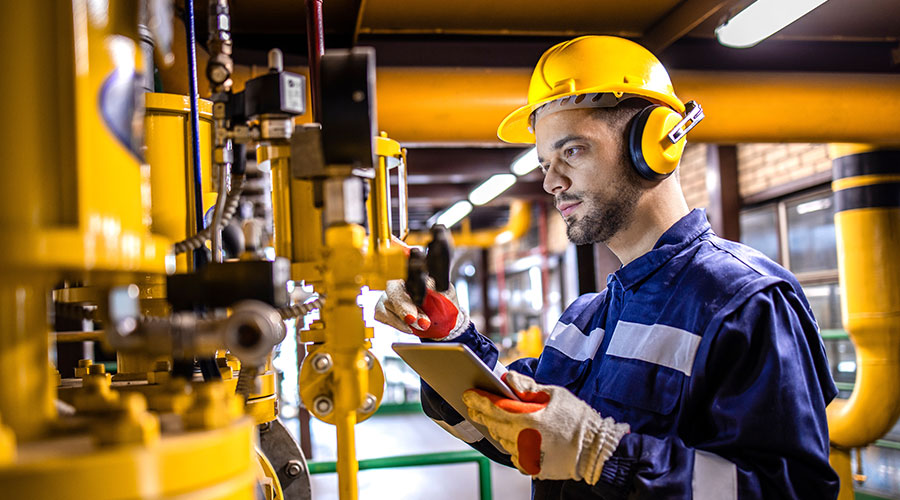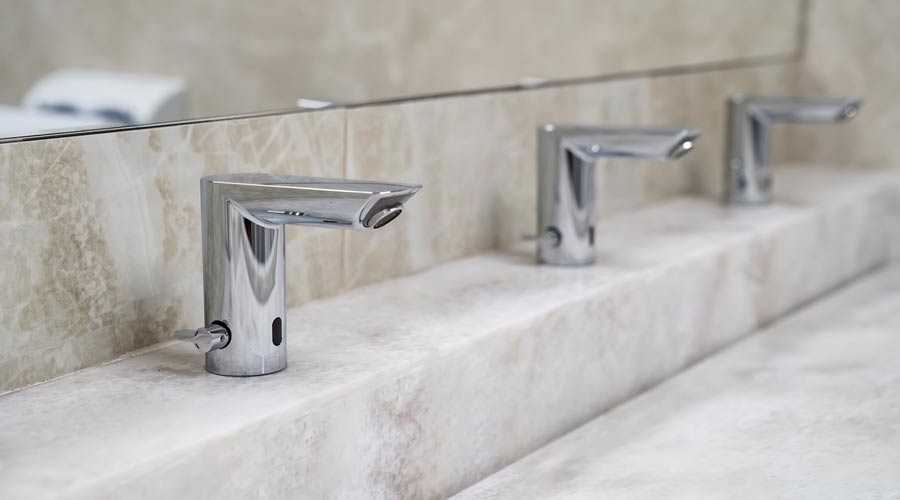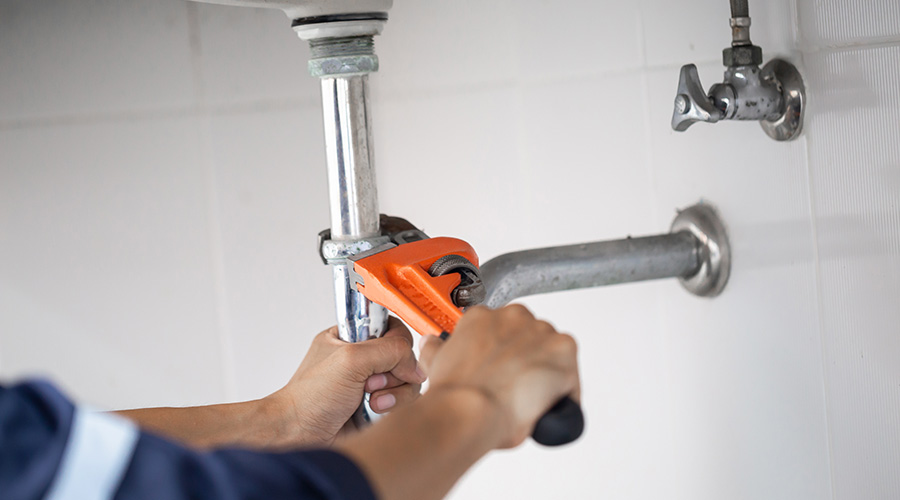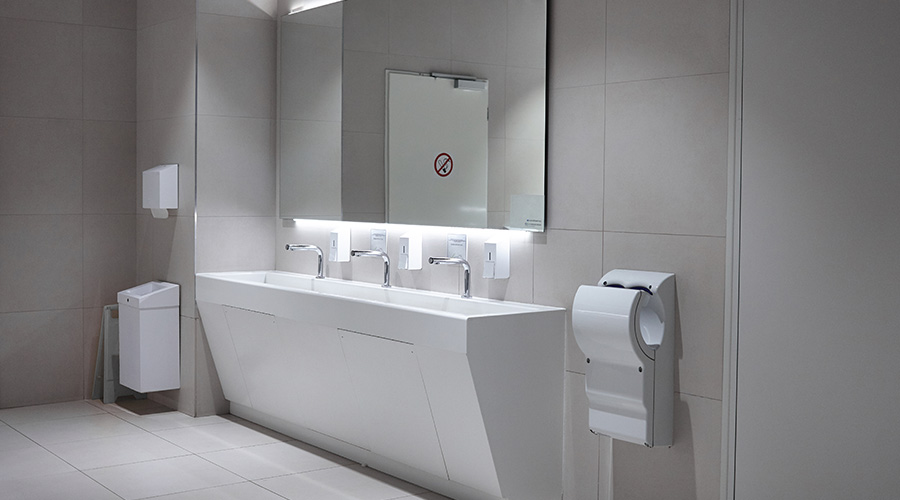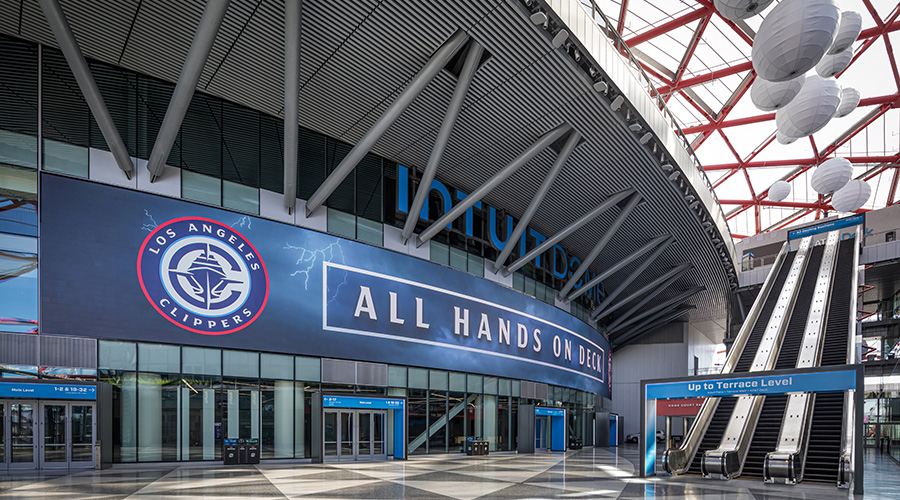Baltimore Convention Center Stresses Planning for Restroom Upgrades
Restroom upgrades at the Baltimore Convention Center require careful attention to products, customers and schedules.
By Dan Hounsell, Senior Editor?
The challenges facing the Baltimore Convention Center were easy for everyone to see. The issues were especially evident for visitors attending events in the 1.2-million-square-foot facility and using its restrooms.
“A lot of the comments that we got were very blunt,” says Ethan Lang, the center’s director of facilities and operations. “They said the restrooms are not visually appealing. They don’t flow well. They’re dark. They seem their age. There’s nothing inviting. They don’t have that fresh, clean feel of a bright, well-lit, light-colored restroom.”
The convention center’s response to such comments is a $4.8 renovation that got underway last month with the goal of updating its image and rekindling its appeal to future event attendees. As with any large-scale project in an institutional and commercial facility, this project’s success will depend heavily on the hours of careful planning that already have gone into the project.
Scoping the work
The restroom renovations on the Baltimore Convention Center’s exhibit level are targeting five men’s restrooms, five women’s restrooms, four all-gender restrooms and employee locker rooms and are scheduled to finish in 2027. While funding became available and planning started in earnest in April 2023, Lang and his team had identified the need long before.
“Everything that we’re doing has been on a deferred maintenance list for 10 years,” he says, adding that the upgrades will affect nearly every aspect of the spaces.
“We’re doing them phased so that we don’t have every bathroom out of service at the same time,” Lang says. The renovations will upgrade everything in the spaces from toilets, urinals, flush valves and faucets to soap and paper towel dispensers, lighting and controls, doors and changing stations.
“For our customer-facing restrooms, we want to modernize and improve attendee experience while also making necessary repairs and upgrades to infrastructure,” Lang says. “On the employee side, we want to continue our commitment to respecting and improving the lives of those who make our building function day to day by providing new, modern, and comfortable spaces for all employees to enjoy.”
Several factors drove the decision to renovate the spaces, including comments from visitors.
“It’s something that we know from our customer advisory board and some other polling that we do post event,” Lang says. “The quality of restrooms is a concern of our attendees and clientele. That’s really what drove it.”
The project also received a boost in the form funding from the state of Maryland.
“Given that we’re a publicly owned building that is being renovated partially with public funds, having something that the public can actually experience and those that are attending events here was very important,” he says. “Bathrooms are incredibly important as a touch point when it comes to people’s perceptions of a building. This was a smart decision to put some attention and money toward a frontward-facing item.”
A similar renovation project at a prominent nearby facility — Baltimore/Washington International Thurgood Marshall Airport (BWI) — also helped drive the convention center’s decision.
“BWI has done significant renovations to their restrooms that have had incredible reception,” Lang says. “We saw that as a case study locally. This is where they chose to put their money, and it worked out incredibly well for their clientele, which is very much the same as ours because conventioneers and attendees have to travel there in order to get to us. We used that as a basis.”
Spotlight on products
Planning for the Baltimore Convention Center’s restroom renovations included careful consideration of the specific products to install in the upgraded restrooms and locker rooms. Critical information in the decisions came from especially knowledgeable sources — manufacturers.
“I put a lot of faith in the experts in their field," Lang says, adding that relying on manufacturers helped avoid wasted time and energy conducting potentially frustrating product research. “It was very nice to be able to say to our rep, ‘Can you sit down with our architects and tell us, these are the products that the Baltimore Convention Center is using. These are the dispensers that are compatible with those products, and this is the look that the architects want and functionality.’”
The renovations also present the opportunity to standardize plumbing fixtures going into convention center’s restrooms.
“We've been shifting to all (one manufacturer) because it’s easier for us to maintain and easier for us to get parts,” he says. While the upgrade’s plumbing fixtures and other products will not feature new-generation sensors that support remote monitoring and predictive maintenance, Lang says the current upgrades will lay the groundwork for that technology.
“It is not something that we are using in this project, but we are setting ourselves up with the technology to be able to implement it in the future,” Lang says. “We’ve looked at it as the right opportunity because we’re not doing every single bathroom in the building at once. But it’s still something we want to get our feet under first and then say we’re comfortable with this tech, let’s roll it out as we renovate more bathrooms.
“Being able to see what percent you have left on a paper towel roll from an app versus paying an employee to go check it every hour is very helpful. We are planning to implement that technology. We're buying fixtures and dispensers that are compatible with it.”
Putting the plan into action
Planning the convention center’s restroom upgrades has involved careful consideration of several additional issues both large and small.
“I have to be able to say yes or no to every small thing down to its colors, fixtures, door handles. A faucet, all of that I have to give the OK on,” he says. “That kind of stuff at certain points gets elevated to whomever it may impact or affect. When we’re talking about color schemes for a restroom, our director of sales, our executive director and our deputy director are part of that conversation because that is a client-facing item.
“When it comes to the mechanical work that we’re doing, the electrical work that they’re doing, it’s just me understanding that. But if it affects a party, then they’re involved. It depends on what the job is, what the task is and what the items are. If it’s something they don’t care about, then they’re not going to be involved. If it’s something that is important to them or is important to our client-facing atmosphere, then that’s them.”
Because the convention center will continue hosting events into the foreseeable future, planning for the restroom upgrades also involves tailoring the project team’s work schedules to avoid disrupting the events and their attendees.
“It’s been a significant challenge,” says Lang, who credits the center’s sales and convention services team in working around scheduled events. “They’ve done a ton of very good communication to make sure that both clients that are contracted for these time frames and then potential future clients are aware of what’s happening.
“It’s impossible to try to work around every potential conflict or disruption. So what we've done is phased the work and created enclosures and partitions that separate the workspace from the rented space. People may know that work is going on, but they'd have to be looking closely in order to see that it's going on.
The additional challenge for this project is that potential conflicts will go on for the next two years.
“While these projects are ongoing and the vast majority of the people impacted by this are aware of it, they’ve been given a significant amount of detail so they know when they walk in the door, when their attendees walk in the door, what to expect, especially since these are relatively simple projects,” he says.
“We’re booked out into 2030, so it’s imperative that we continue to operate as normal. It’s imperative that we keep those moving as quickly as possible. It’s all about communication and having the conversation to make sure people are aware of what they’re walking into. On our construction side, we’re hosting people sometimes in black tie and we need to just be aware of our surroundings and how we interface.”
Ultimately, the success of the convention center’s restroom upgrade projects also will be determined by the result of careful planning by Lang and his team, as well as the impression the projects make on those attending upcoming events.
“Many of the back-of-house projects aimed at maintenance and repair of infrastructure will have little to no tangible impact on our business and clientele, while the restroom renovations have significant impact due to the fact that there will be rentable spaces lacking a connected restroom,” Lang says. “We have spent hundreds of hours developing schedule and accommodation to ensure that no booked event and its attendees feel the impact of our construction activities and we minimize any associated disruptions.”
Dan Hounsell is senior editor for the facilities market. He has more than 30 years of experience writing about facilities maintenance, engineering and management.
Related Topics:







